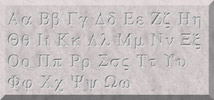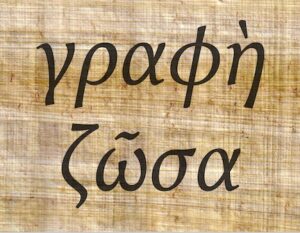James Tauber has published a short video explaining the accentuation of Ancient Greek words in a way that is more precise than what is found in beginning grammars that deal with the issue. If you don’t follow the argument fully, just watch a second time.
If you have never studied Greek accents before, here are some terms that may help you understand the video:
Syllable Positions
ultima = the last syllable in a Greek word
penult = second to last syllable
antepenult = third to last syllable
Accentuation Patterns:
oxytone = an acute accent (´) on the ultima
paroxytone = an acute accent on the penult
proparoxytone = an acute accent on the antepenult
perispomenone = a circumflex accent (῀) on the ultima
properispomenone = a circumflex accent on the penult
Thank you, James.
 Louis Sorenson has produced a nice reading of the first nine chapters of Mark’s Gospel following Westcott and Hort’s 1881 text using the Restored Koine pronunciation. His Let’s Read Greek website has numerous helpful resources for reading Greek texts. This is one among many.
Louis Sorenson has produced a nice reading of the first nine chapters of Mark’s Gospel following Westcott and Hort’s 1881 text using the Restored Koine pronunciation. His Let’s Read Greek website has numerous helpful resources for reading Greek texts. This is one among many.



 I’m looking forward to tomorrow (November 19, 2016)! Jonathan Robie and I will present our ongoing work on the communicative Koine Greek course, γραφὴ ζῶσα. Our presentation will take place at the 1:00 pm session of the Global Education and Research Technology section of the Society of Biblical Literature (SBL).
I’m looking forward to tomorrow (November 19, 2016)! Jonathan Robie and I will present our ongoing work on the communicative Koine Greek course, γραφὴ ζῶσα. Our presentation will take place at the 1:00 pm session of the Global Education and Research Technology section of the Society of Biblical Literature (SBL). If you are interested in Open Source software or Open Data projects for the Biblical languages, I would like to recommend the following sessions at SBL:
If you are interested in Open Source software or Open Data projects for the Biblical languages, I would like to recommend the following sessions at SBL: